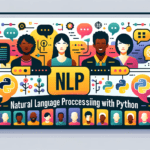DevOps, a blend of “Development” and “Operations”, is more than just a buzzword; it’s a paradigm shift in how we build, test, and deliver software. The essence of DevOps revolves around automation, collaboration, and continuous integration and delivery. However, the success of a DevOps initiative often hinges on the tools leveraged. Let’s delve deep into the best DevOps tools that are shaping modern development landscapes.
“DevOps: Bridging Today’s Innovation with Tomorrow’s Possibilities”
In the dynamic realm of software development, there exists a symphony between creation (Development) and delivery (Operations), often referred to as DevOps. This philosophy, emerging from the confluence of Agile software development and the need for faster, more reliable software releases, has revolutionized how we conceptualize, create, and deploy digital solutions.
But DevOps is more than just a methodology; it’s a cultural shift. It emphasizes collaboration, automation, and continuous feedback, blurring traditional boundaries within IT departments. As technology continues to advance, the future of DevOps promises even more integration, agility, and innovation. From leveraging Artificial Intelligence for smarter automation to incorporating Quantum Computing for enhanced performance, DevOps will continue to evolve, ensuring that our software solutions remain not just current but also future-ready. Embracing DevOps today means paving the way for a future where innovation is not just anticipated but seamlessly integrated.
Let’s delve deeper into the importance and intricate workings of the Best DevOps tools
1. Source Code Management: Git
Git: The Cornerstone of Collaborative Coding
Developed by Linus Torvalds in 2005, Git is more than just a version control system; it’s the backbone of numerous software projects, from open-source to enterprise platforms.
Deep Dive into Key Features:
-
Branching and Merging:
One of Git’s most celebrated features. Developers can work on features, fixes, or experiments in isolation (via branches) and then seamlessly integrate them back into the main code (via merging).
-
Distributed System:
Every developer’s copy isn’t just a snapshot; it’s a full repository with complete history and version-tracking abilities.
Beyond the Basics:
Git fosters a culture of collaboration. With features like git blame, developers can understand who made what changes and why, ensuring transparency and accountability.
2. Continuous Integration: Jenkins
Jenkins: The Automation Maestro
Named after a fictional butler, Jenkins dutifully manages continuous integration and delivery, ensuring that code is always deploy-ready.
Deep Dive into Key Features:
-
Build Pipelines:
It’s the assembly line for code! From fetching the latest code to running tests and deploying to production, Jenkins manages it all seamlessly.
-
Plugin Ecosystem:
Jenkins’ power can be extended with plugins, integrating it with tools like Git, Docker, and Slack.
Beyond the Basics:
The real value of Jenkins lies in its community. Thousands of developers worldwide contribute to its ever-growing repository of plugins and features.
3. Containerization: Docker
Docker: Modern Software’s Container Ship
While virtualization revolutionized IT, Docker took it a step further. It ensured that software, once developed, runs the same, irrespective of where it’s deployed.
Deep Dive into Key Features:
-
Reproducibility:
Gone are the days of “it works on my machine” excuses. Docker containers ensure that software environments remain consistent, regardless of where they’re run.
-
Docker Hub:
Think of it as the ‘App Store’ for Docker containers. Developers can push, pull, and share containerized applications with the global community.
Beyond the Basics:
Docker’s rise to fame can also be attributed to its orchestration tools like Docker Swarm and integrations with Kubernetes, allowing for auto-scaling and management of large container clusters.
4. Configuration Management: Ansible
Ansible: The Orchestra Conductor of Servers
In a world with myriad server configurations, Ansible emerges as the maestro, ensuring every server performs its part perfectly.
Deep Dive into Key Features:
-
Playbooks:
These YAML scripts are the heart of Ansible. They describe the desired state of systems, and Ansible makes it so.
-
Agentless:
Unlike other configuration management tools, Ansible doesn’t need an agent installed on remote systems. It works over SSH.
Beyond the Basics:
Ansible Galaxy, a community hub, allows users to share and discover playbooks, roles, and configurations, making it a vibrant tool for sysadmins and DevOps engineers.
5. Monitoring and Analysis: Splunk
Splunk: The Data Sleuth
In a world drowning in data, Splunk surfaces the insights, turning machine-generated data into actionable intelligence.
Deep Dive into Key Features:
-
Data Visualization:
Raw data can be overwhelming. Splunk’s dashboards transform this data into visual stories, making comprehension a breeze.
-
Alerting:
Splunk keeps vigilant watch, sending out alerts when predefined conditions are met, ensuring teams can act swiftly.
Beyond the Basics:
Splunk’s capabilities extend to predictive analytics, machine learning modules, and even cybersecurity, making it an indispensable tool for modern businesses.
6. Collaboration: Slack
Slack: Where Work Happens… Conversationally!
Beyond being a messaging platform, Slack is the digital watercooler of modern workplaces, fostering collaboration and camaraderie.
Deep Dive into Key Features:
-
Channel-Based Communication:
From project teams to interest-based channels, Slack ensures conversations remain organized and searchable.
-
Integration Ecosystem:
Slack plays well with others. From getting Jenkins build notifications to creating Trello cards, integrations turn Slack into a powerful work hub.
Beyond the Basics:
Slack isn’t just for work. Communities, open-source projects, and even hobby groups leverage Slack for its ease of use and robust features, making it a universal communication tool.
In Conclusion
DevOps stands as a beacon of seamless collaboration and efficiency, ensuring that the bridge between development and operations remains strong and streamlined. The tools under the DevOps umbrella, from source code management to real-time monitoring, play a pivotal role in this harmonization. They not only automate and optimize processes but also foster a culture of continuous improvement and innovation. As we venture further into the technological future, the significance of these tools will only amplify. Their ability to adapt, integrate, and evolve will dictate the pace and direction of software advancements. In essence, while DevOps lays the foundation, it’s the tools that build the skyscrapers of tomorrow’s digital success.



